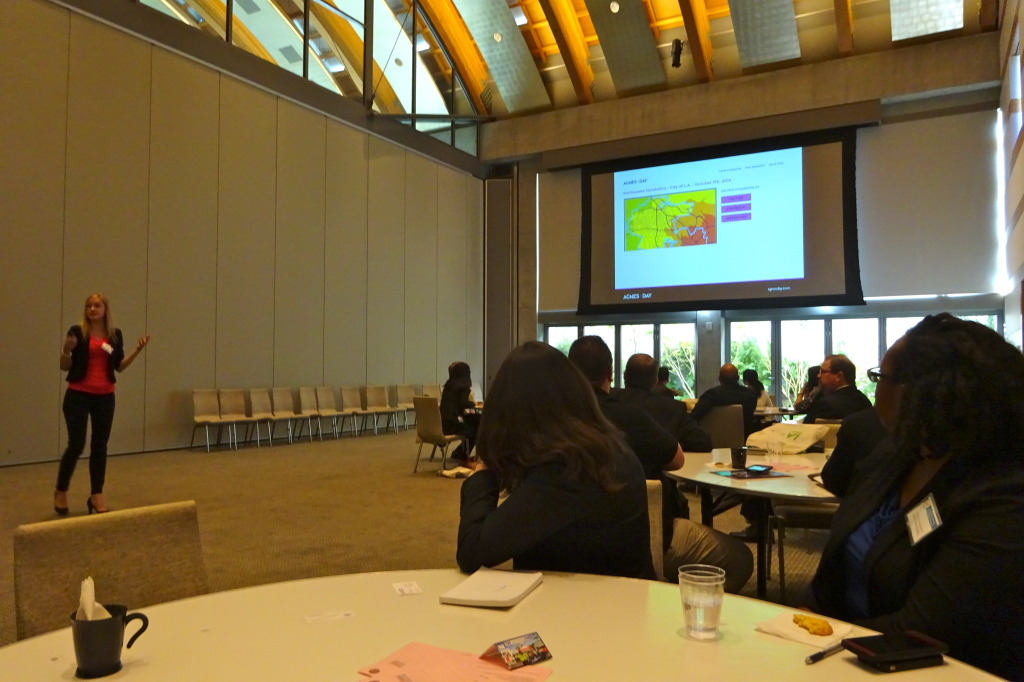 Last week I had the honor of attending the City of L.A.’s Emergency Management Conference, where I put city officials through a simulated earthquake exercise.
Last week I had the honor of attending the City of L.A.’s Emergency Management Conference, where I put city officials through a simulated earthquake exercise.
Using Agnes + Day’s crisis simulation platform, the exercise simulated the digital noise that is a guaranteed result of any crisis or emergency today. Attendees, who were tasked to work as PIOs, had one very important goal within this exercise: To filter through the digital noise and position the city as the voice of calm and authority in the crisis. We had an hour and 15 minutes for the exercise which isn’t very much, but the brilliant men and women who attended did a phenomenal job.
The simulation is only one part of the exercise
A simulation is an excellent way to test, learn and strengthen skills. But this sort of exercise isn’t complete without a debriefing afterwards. The debriefing allows those who took part to really digest and absorb the experience they just went through. It’s the time when questions get answered and discussions of best practices takes place, benefiting everyone involved.
In both of my sessions, there were two main questions that emerged. The first was the use of hashtags in crisis and emergency management, and the second was whether or not the use of dark websites should be considered a crisis communication best practice. Both are important questions that require strategic thinking and protocols.
Information and best practices when it comes to hashtags and dark websites in crisis management
Agnes + Day offers two resources that address each of these questions, not to mention the numerous blog posts on the proper and strategic use of hashtags – both for campaigning and for crisis communication. At the bottom of this post I’ve provided you with three links to learn more, if you yourself have questions when it comes to either of these two strategies.
Crisis management concerns that absolutely need to be addressed
Besides from these two important questions, there are some major crisis management concerns that continue to come up at every presentation or workshop I give. These concerns keep those responsible for addressing them up at night and, unfortunately, they’re concerns that leave every single organization vulnerable. These concerns include:
- The shear volume of information that floods in in a crisis or emergency situation.
- The challenge of responding to the digital noise in real-time, and positioning the organization as the credible voice of calm and authority.
- Internal communications: In a disaster, will communicating with third-party agencies, internal stakeholders, different departments, different parts of the city, different business units or franchises, etc., in real-time, become an issue?
- Resources: It’s one thing to have the vision and the plan, it’s another thing to actually have all the personnel resources needed to effectively manage a crisis or emergency.
- Cyber attacks
These are some major concerns that apply to everyone responsible for the safety, business continuity and crisis management of any organization (whether governmental, private, public, not-for-profit – you name it). They’re real concerns and no matter what, in the hecticness (WordPress is telling me that that’s not a word, but I’m using it anyway!) that is a crisis or emergency, they become a challenge that even the best plans in the world can become vulnerable to.
Answering these concerns
Over the coming days and weeks I will be addressing these concerns through this blog. However, before I begin to publish responses and helpful insights, I would like you to think about these issues long and hard. Which of them applies to your organization and where and how do they currently present areas of vulnerability for your crisis management?
The resources I promised you above
I promised you resources that will help you answer the two common questions outlined above: the use of hashtags in a crisis or emergency and best practices for dark websites – where and when are they your best option, and if they aren’t, what’s the right alternative? Below you’ll find links to resources and blog posts that will help you answer these questions and begin to develop the right strategies for your crisis management plan:
The use of hashtags in crisis communication
eBook: Guide to Leveraging and Managing Twitter in a Crisis
Click here to take a peak inside this ebook.
To read past posts on the use of hashtags, click here
Dark websites
White paper: Dark Websites as a Crisis Communications Strategy
This white paper details everything you need to know when it comes to dark websites and their alternatives.

Author of Crisis Ready: Building an Invincible Brand in an Uncertain World, Melissa Agnes is a leading authority on crisis preparedness, reputation management, and brand protection. Agnes is a coveted keynote speaker, commentator, and advisor to some of today’s leading organizations faced with the greatest risks. Learn more about Melissa and her work here.
